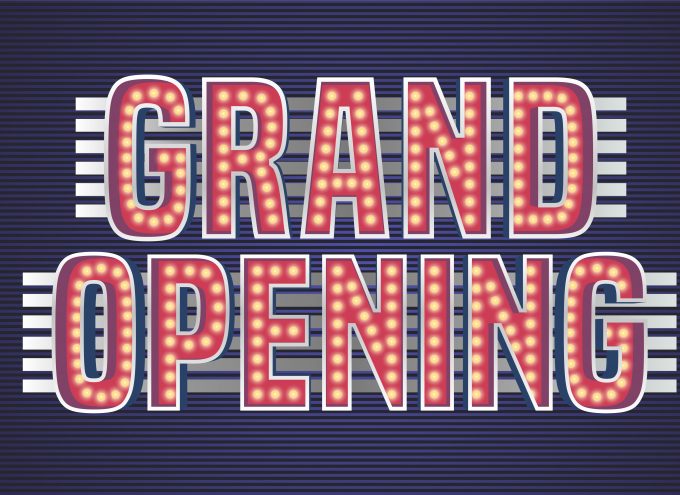Brands and businesses today agree that even in a digital first environment, there’s no substitute for meeting customers face-to-face. In-store events are still common today because they provide a reason for that face-to-face meeting.
In-store events create familiarity, loyalty, and a connection with the local community. They are also a perfect opportunity to promote products and special items. But what can you do to make sure your event is a hit?
Here are the planning steps you need to take and tips to make sure that your first, or your 50th in-store event is a success.
Focus
Your in-store event should have a central theme or purpose. This could be anything from a discount promotion or product launch to a community fundraiser or event. Is the purpose to get rid of old inventory? Or is it to raise money and awareness for the community? It’s best that you pick one focus, and stick to it so you don’t confuse potential customers. Set a clear goal for the event, and create a sense of urgency about why they need to attend to achieve the goal.
Plan
In order for your event to go off without a hitch, it’s crucial you plan well in advance. Create a timeline and calendar with important tasks, dates, and deadlines. You should also employ project or task management software tools such as Basecamp or Asana. This will allow you to assign different tasks or duties to different people, set clear deadlines, and monitor everyone’s progress as a whole.
Confirm
You want to make sure to confirm everything as the event approaches. This means setting up all of your promotional items for the event and getting them organized at the store ahead of time. You also want to line up your sponsors and partners well in advance. As the event approaches, confirm their participation and make sure they have everything they need. Finally, don’t forget to confirm the food and beverage vendors you’ve lined up are still able to attend (on time!).
Promote
Once you have everything in place, it’s time to promote your event. You’ll want to get people to “save the date,” and give them the opportunity to do so by marketing with email, social media, and print advertising. This RSVP should be sent out in tandem with a formal invitation, letting them know what the event is about and with a strong call to action to reserve their space.
This is where Valpak steps in to help a lot of businesses, by designing and executing mailing programs to promote events. Think about not just mailing invites, but contests, promotions, and coupons that can be sent to incentivize people to attend. Just keep in mind that print marketing requires a longer lead time, so take an integrated approach and use it with digital and social.
Finally, leverage your network of partners, promoters, and influencers to share information about your event. In every communication with them, stress how and why attending the event will help their network. In other words, focus on what’s in it for them, not you. Also, consider issuing a press release to get the ball rolling and create some buzz.
Collect Data
During the event, make sure you have some kind of method for collecting people’s data, so you can market to them down the road. Raffles and drawings are great ways to accomplish that. You can even ask people to provide their email or phone number in exchange for a discount coupon.
Provide Coupons
It’s important to get customer information and have a post-event content strategy to re-engage these individuals. One of the best ways to do this is to provide coupons and items within your social networks, and website, for future purchases.
Referral Discounts
Aside from providing those who attended with coupons, you want to give them additional discounts to pass on to friends and family. This will broaden the base of people who are likely to try your product or service, and create a team of customers that are doing your marketing for you.
Have Fun
In-store events should be about fun, excitement, and meeting new people. Don’t be so overly concerned with everything that you appear stressed or anxious. If you’re having fun, the attendees will have more fun. This will raise their level of comfort with you and your brand, and make them more likely to engage in the future.
Measure Success
After your in-store event is complete, it’s crucial that you measure how well it went. The focus you applied in your first step of planning will tell you what success looks like now. It could be measured by attendance, sales, or donations that contributed to the overall goal of the event.
Not all of the ways your in-store event impacts your business occur on the day of the event. Remember those coupons you sent to be shared with friends? You also want to track incoming coupons and referrals associated with the event until their expiration date to truly see how many people you reached.
Send Your Thanks
Finally, don’t forget to thank the people, partners, and sponsors that attended. For future customers, thank them and also put them into some kind of post-event marketing program. This could be giving them more information about your products, making them aware of specials, or even getting them excited about your next event!
Get Started Today
Beginning the process of planning a great in-store event doesn’t have to be a huge headache. Here are a few things you can do right now to get started:
- Look at your calendar. Think about when are some good times during the year to conduct events according to your business and customers. Come up with a few rough time frames that might work.
- Assess your partnership. You’ll need partners, sponsors, and promoters to help get the word out. Make a list of potential contacts that might be willing to do so. You’ll then have some idea if you already have enough partners, or need to go out and find more.
Evaluate technology. Create an inventory of all the necessary software tools and technology that you’ll use during event planning and execution. This could include email marketing, project management, and scheduling applications. Make sure you have the minimum for what you need, and the proper training in place so your team knows how to use everything.




